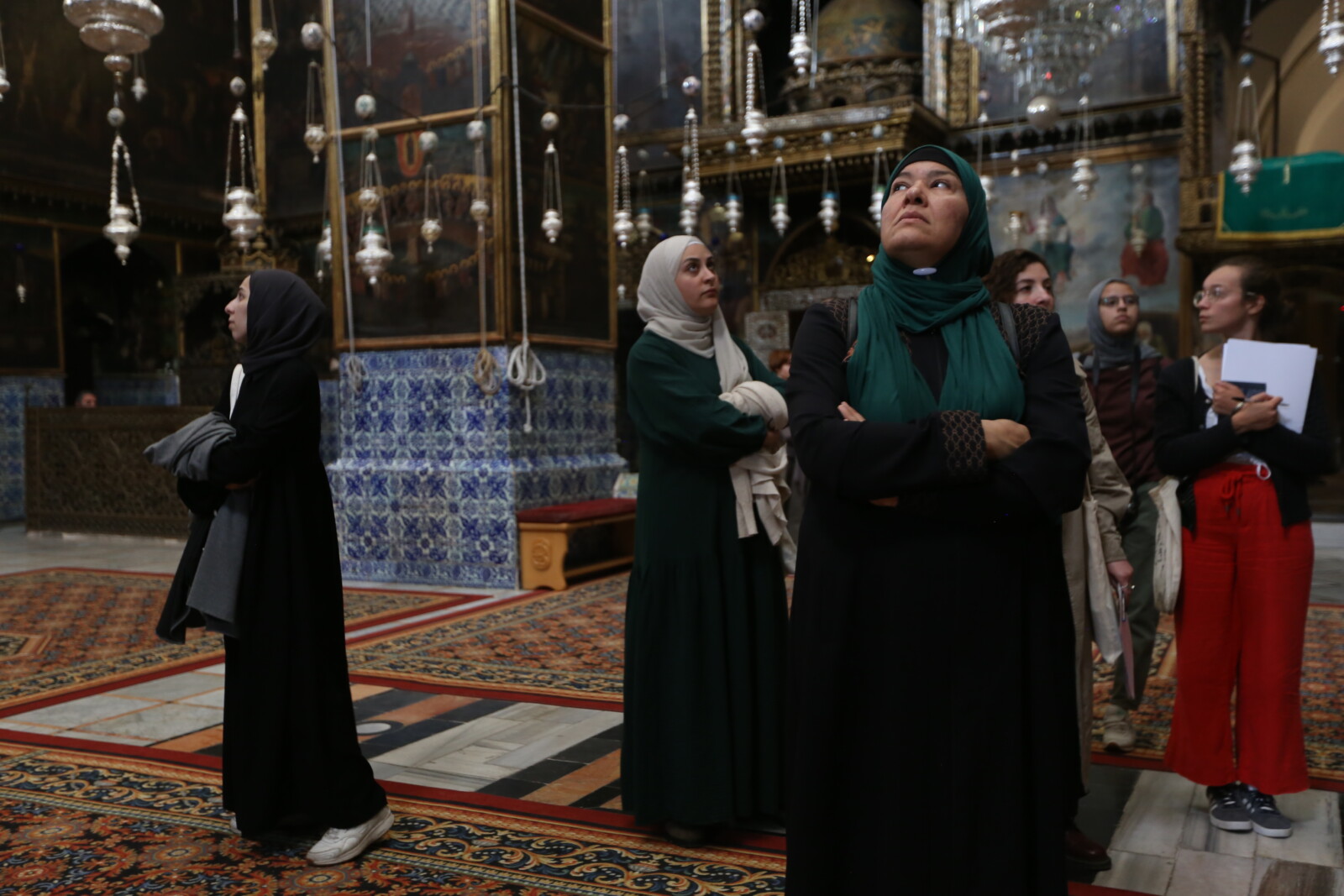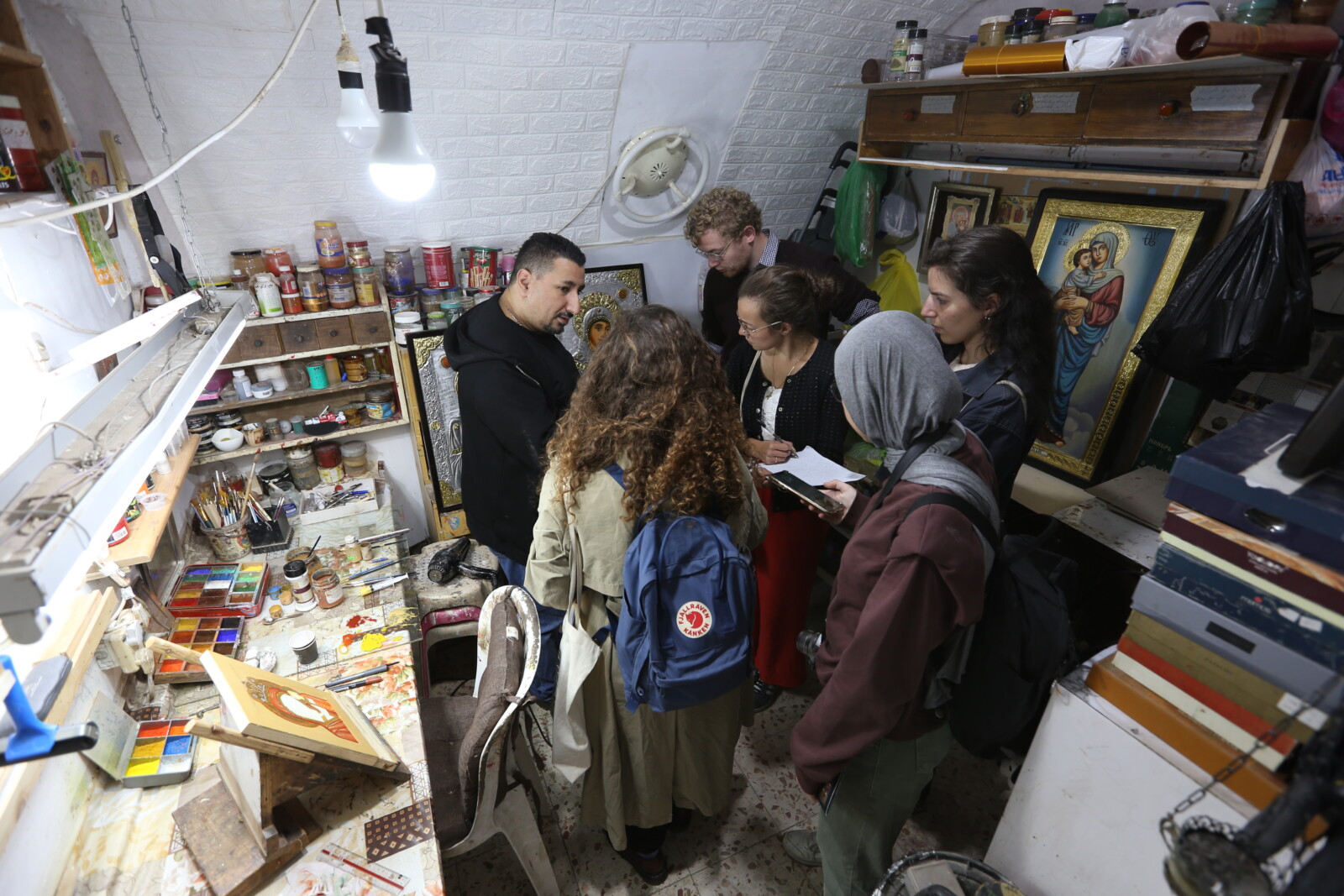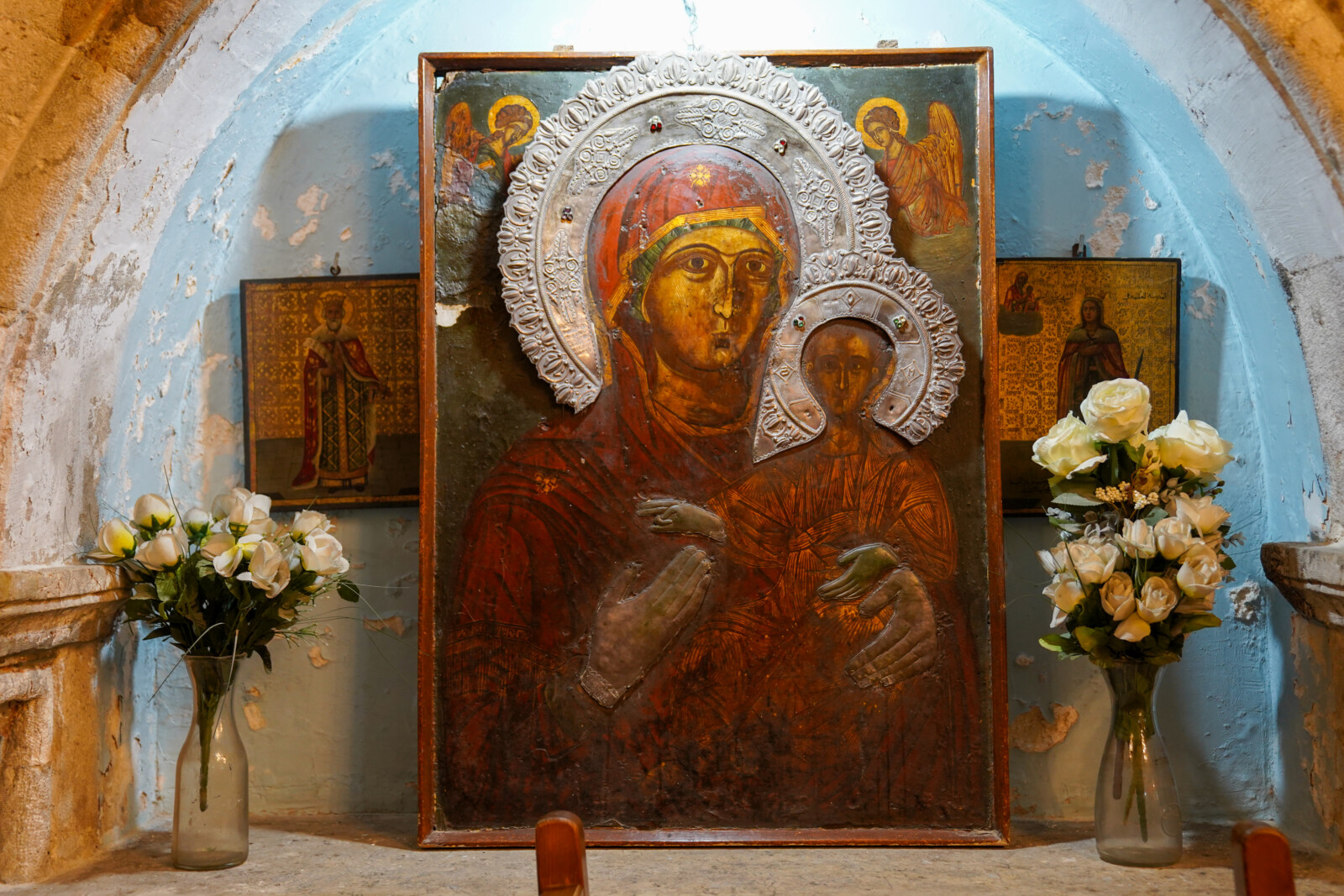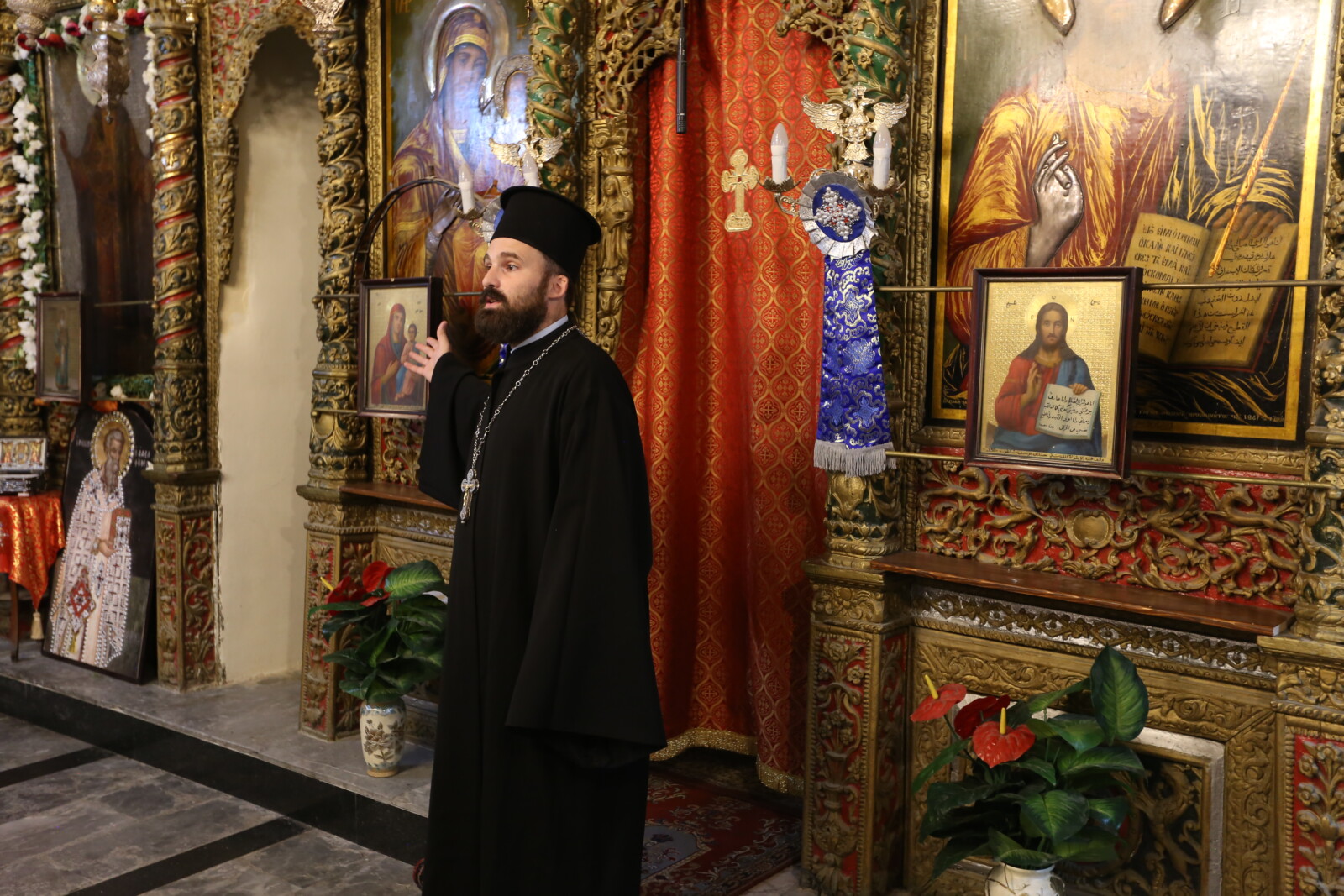Discovering the Palestinian Icons of Jerusalem
In November 2022, we took you on a tour that led to the discovery of the religious icons of the Jerusalem School in the Old City. During that visit we admired icons from two of the most emblematic places in Jerusalem: the Armenian Church of Saint James and the Church of Saint Jacob (adjacent to the Holy Sepulchre).
Organized by the mediation team of the Terra Sancta Museum, these visits aim to facilitate the understanding of this cultural heritage by an audience belonging to different faiths. They are unique in allowing you to visit the Armenian and Greek cathedrals of Jerusalem which are usually closed to the public. New dates are planned for January.


At the Origins with the First Followers of Christ
To understand the icons of the Jerusalem School, one must go back to the time of the first Christian communities and therefore to the Cathedral of St. James, the gateway to the Armenian quarter in the old city. James, “brother of Jesus”, martyred in 44 by Herod Agrippa, was the first bishop of Jerusalem. His head is kept here, while his body is in Spain, in Compostela.
The cathedral, built on the site where tradition places the house of the apostle James, was the seat of the first council and is considered the oldest church in the world. Its origins date back to the 1st century and the oldest structures still visible date back to the 10th century, well before the Crusades.
On the walls, there are numerous icons depicting the lives of the Virgin Mary and Jesus, from the Nativity to Pentecost. On the upper floor, we find the saints of the Old Testament and the first martyrs after Saint Stephen.
During the mass, the cathedral is lit only by oil lamps. The practice of maintaining a traditional liturgy, wherein the lamp represents the believers, and the oil represents faith, is continued even though it causes a darkening of the paintings. This choice reminds us that a church is not a museum, but first and foremost a living place where worship is offered, even at the expense of proper conservation of icons. These liturgical considerations do not prevent the Armenian clergy from planning a major restoration campaign in future.

The last Workshop for Palestinian Icons in Jerusalem
The tour proceeds into the heart of the Armenian quarter, to a workshop where the art of iconography is handed down from father to son: Artin Nalbandian has revived this sacred practice and has passed the craft on to his son Gabi, who has also been captured by the art form. He welcomes us to his family home, where his studio is also located.
The name “iconography” comes from the Greek eikon (image) and graphein (to write), and tradition holds that when an artist creates an icon, he “writes” it rather than “paints” it. The artist shows us how the Jerusalem style is characterized by the expression of the faces, the choice of colors and a golden band that is found on most of the icons belonging to this school. As a sacred object, the icon is destined to be preserved for hundreds of years, and for this reason the colors are made up exclusively of minerals. They are glued to the wood using various organic mixtures of egg base or alcohol (vodka in generally).


Meeting with an Icon from the First centuries
The Palestinian Christians who promoted the Jerusalem School were inspired by the Byzantine tradition to decorate the Holy Sepulchre with their works. Most of the icons are found
in the Orthodox Cathedral of Jerusalem, dedicated to Saint Jacob (Mar Yacoub in Arabic). Here we receive a welcome from Father Georges Khader, a priest of the Greek Orthodox community who points out the oldest icon of the cathedral, dating back to the 6th century, to which many miracles are attributed.
As one of the oldest forms of Christian art, icons transmitted the faith because they allowed the illiterate to “read” the story of the Bible depicted on these wooden panels. In this way, they were a sort of “first Gospels” since they were used long before the scriptural texts were widely available in the second half of the first century.

Brief History of a Thwarted Destiny
After the iconoclastic period, and with the Second Council of Nicea in 787, we witness the rehabilitation of regard for icons as sacred. This was the last ecumenical council before schism of 1054, which marked the break between the Church of Rome (West) and the Church of Constantinople (East). After the division, the Church of the East continued to keep the tradition alive through processions and veneration by the faithful, who kiss the icons as a sign of respect and place beeswax candles near them as part of their prayer.
This type of sacred art will also find a place in the Terra Sancta Museum.
(Translated from French by Lois Owen)


For further information :
Raphaëlle Ziadé, L’art des Chrétiens d’Orient, Citadelles & Mazenod, Paris, 2022.
This tour is part of the UNFPA funded Fursa (Opportunity) project in Palestine and made possible by Burj Alluqluq Social Center Society جمعية برج القلق المجتمعي.
Thanks to Hana Irshaid and Eyad Handal of the Terra Sancta Museum, Father Arshak, Father Khader, Bramki, Artin and Gabi Nalbandian for welcoming us and enriching our knowledge of the icons of Jerusalem.



